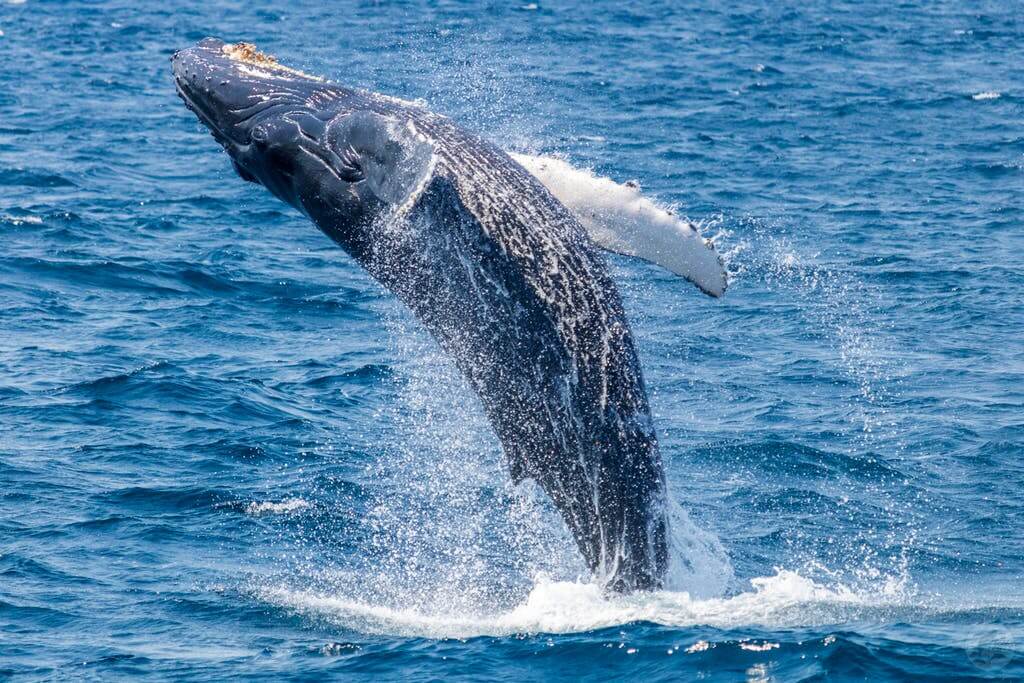Whale Entanglement Part 3: How to Prevent Entangled Whales

Whale entanglement in fishing gear is affecting the whale population at an astounding rate. A record number of entangled whales have been reported since the early 2000s, putting large whales such as blue whales, humpback whales, and gray whales, at great risk of injury and death. Whales that become entangled in fishing line and fishing net associated with popular gear such as California Dungeness crab fishery make whales entangled in fishing gear a sad yet common occurrence in our oceans today.
As we’ve taken a closer look at the devastating reality of whales becoming entangled in fishing gear, how and why whales become entangled, what happens to them in the process, and what rescue and response teams do to assist these marine mammals, we’d love to dive deeper with you as we take an in-depth look at how we can reduce entanglements and prevent them from happening in the future.

Current Methods of Preventing Entangled Whales
NOAA fisheries with the National Oceanic and Atmospheric Administration is currently undergoing noteworthy outreach efforts to the fishing industry, public, and fishery managers on both the state and federal levels along the west coast. As they do so, their efforts to bring awareness to the entanglement dilemma, promote ideas to reduce the entanglements and improve the reporting of them, is making ripples all along the coasts of the United States.
Groups in the states of Washington, Oregon, and California are working to aid in this issue of entanglement as they discuss and work towards solutions to resolve it. For example, fishing gear working groups have assembled and produced an updated Best Practice Guide to inform others on the best practices to reduce entanglements, especially within a crab fishery. These important actions include where and where not lines should be floating, where to set gear, marking gear clearly, and keeping up to date on the condition of equipment and materials.
A great deal of funding has also taken place to research, promote, and spread awareness of whale entanglement prevention. According to NOAA, “The California legislature also set aside $5.5 million to fund activities to reduce the risks of marine life entanglements in fixed gear fisheries.”
Although these measures are making great wakes in regards to preventing, spreading awareness, and researching entanglements, much more needs to be done to aid in this endeavor. Thankfully, there are several exciting ideas and technologies that are promising for disentanglement prevention efforts.
Captain Dave is passionate about spreading awareness of whale entanglement and he believes it’s important everyone know that nearly 1,000 whale and dolphins are killed every day around the world due to fishing gear entanglement. To help raise awareness he authored an award-winning book, Lily, A Gray Whale’s Odyssey. And he continues to seek out innovative new ways to help entangled marine mammals. Captain Dave has been featured on the Ellen DeGeneres Show, Today Show, CBS This Morning, Eye on L.A., and other programs for his conservation efforts and disentanglement efforts.
New Ways to Prevent Entangled Whales
A new technology known as the Fiobuoy is an environmentally friendly and reliable option to eliminate active and derelict fishing lines in the water, which are a major culprit for whale entanglement. This remarkable new technology enables its user to submerge equipment into the water where it can rest on the bottom of the seafloor.
When a Fiobuoy owner is ready to collect their equipment, they send a signal to the Fiobuoy which is attached to the equipment near the bottom of the ocean floor, and it then rises to the surface of the water where the user can collect both it and the equipment. Since the buoy is able to reside at the bottom of the seafloor with the equipment, it eliminates vertical lines of rope and fishing gear that spread across the path of migratory routes for whales.
This buoy is similar to a new lobster trap that engineers are hoping to implement to reduce and eliminate entanglements. These engineers are with Woods Hold Oceanographic Institution and have invented the “on-call buoy,” which is an alternative trap that resides near the ocean floor, away from migrating whales, and is brought back up to the surface only after activated by a timer or acoustic signal from the owner.
WHOI engineers, Jim Partan and Keenan Ball, stated in 2017: “Our system is to try to store the vertical line on the seafloor – keeping the lines out of the way of large swimming animals – until the fishing vessel crew releases it and is on-site and ready to haul it in.”
These prevention efforts are hopeful, especially for the North Atlantic Right Whale species which is on the brink of extinction, partially due to whale entanglements caused by vertical fishing gear in the ocean which could be prevented with the help of these new inventions.

How You Can Help Prevent Entangled Whales
While these new technologies and ideas are deemed optimistic and ethical, many wonder what simple things they can do as common citizens to help prevent whale entanglements. A good place to start is with awareness.
Many may be surprised to realize that a large number of people are not even aware that whale entanglements are an issue. Starting the conversation is a wonderful way to get the word out while connecting with others about something meaningful. Sharing the link to NOAA’s website with a plethora of information is also a quick and simple way to spread the news.
Another prevention effort can begin with your food choices as purchasing sustainable seafood is a wise and steward-like decision. While your sushi loving friends and family may not be ready to completely eliminate those savory rolls, being more intentional about what kind of fish you are buying, and checking your labels for by-catch info is a great way to be involved in the disentanglement efforts. Seafood Watch from the Monterey Bay Aquarium is a terrific resource to help you choose ethically caught and sustainable seafood.
In addition, keeping your eyes open for entanglements and promptly reporting them is a golden way to do your part in prevention. Although the entanglement has already taken place, your prompt reporting may aid in avoiding further and more severe entanglement. Along the coasts of Washington, Oregon, and California contact the Entanglement Reporting Hotline: 1-877-SOS-WHALe (1-877-767-9425) or contact the US Coast Guard on VHF channel 16 so that they can dispatch trained and professional members of a large whale entanglement response team.
Every effort helps!

Dive Deeper Into Whale Entanglement With a Free Presentation
If you’re a local to the Southern California area or planning a trip to beautiful Dana Point in the month of March, please join us at the Dana Point Festival of Whales where our very own Captain Dave Anderson gives an insightful and fact-filled presentation on entangled whales.
During the presentation at the Dana Point Festival of Whales, attendees will have the opportunity to gain knowledge and learn more from Captain Dave himself, enjoy amazing rescue footage and drone footage, and be able to look at and touch the special equipment and tools used to help entangled whales in our waters.
This devastating occurrence is taking place in our vast and extraordinary oceans, which for some is in their very own backyards. As we gain more knowledge regarding whale entanglements and what we can do to aid in prevention, we find ourselves making great strides in this coastal predicament. We hope you will join us in our continual efforts to help our magnificent marine mammals. Whether your efforts are great or small, we and the creatures out at sea thank you for all you do.
Until next time,
Your Friends at Captain Dave’s Dolphin and Whale Watching Safari
